A few weeks ago I posted some initial work which used a converted high street camera to be ale to make images at 254nm, which is down into the UVC region (see here). Frankly I was stunned to see the camera capture anything at such a short wavelength. The camera used for this was a monochrome converted Nikon d850 from MaxMax, which had had the Bayer filter and microlenses removed. Of the cameras I have, I thought this would give the best shot at seeing that far down, and indeed it did. Some of the folks on the Ultraviolet Photography forum have been looking at image UVC for a while, but until recently I had discounted it as I thought my cameras lacked the required sensitivity to be able to capture anything. After seeing an image with the monochrome Nikon d850, it got me wondering again though about looking at 254nm with a camera with the Bayer filter still in place.
For colour imaging at 254nm, I turned to a Sony A7III which was converted to multispectral imaging again by MaxMax. When this was done I’d requested the sensor coverglass be replaced with a quartz window, instead of being left in place which is normally what happens with these types of conversions. Using the came setup as discussed here, an image of the feather in a vase was captured along with the diffuse reflection standard. After white balancing this was how it looked.
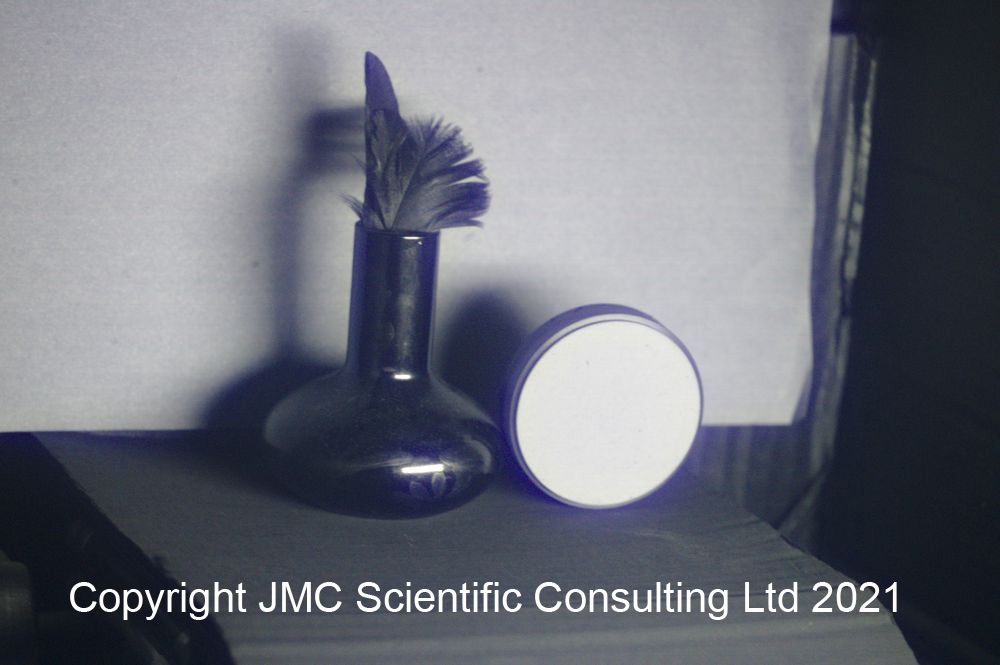
As before I captured an image with a Schott WG305 filter as well to see how much of the image was coming from longer wavelengths, and here’s how that looked.
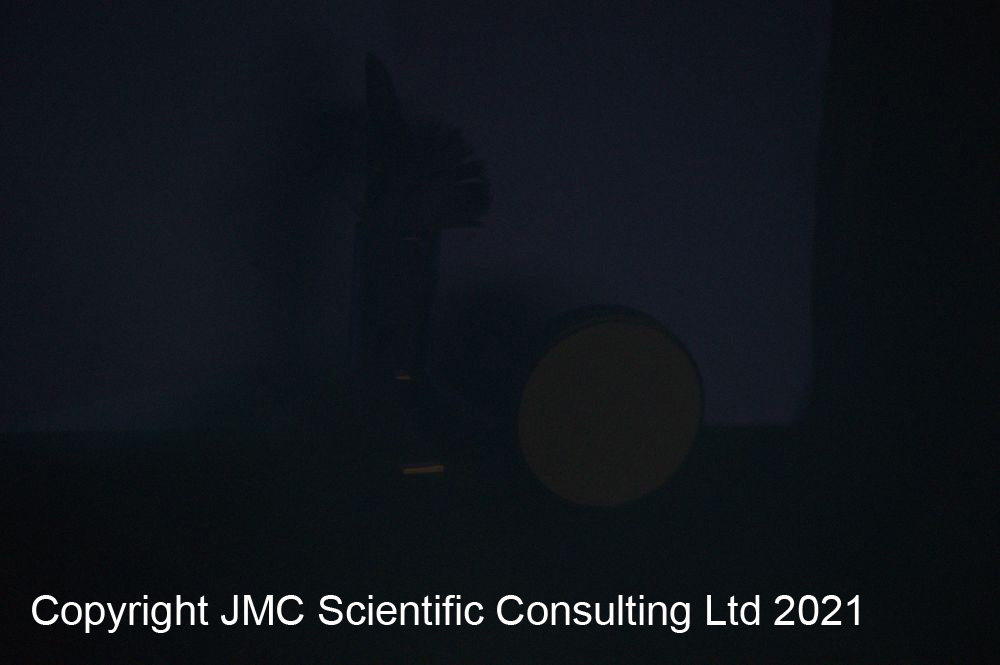
As with the monochrome camera, a faint image was seen with the WG305 in place, indicating what I was capturing at 254nm was not a pure 254nm image, but that there was some contributions from longer wavelengths. However the majority of the image was indeed coming from reflected 254nm light.
I was really surprised with the performance of the Sony A7III and the fact that I could get an image at 254nm with it, with the Bayer filter still in place. Given how much UV was absorbed at 308nm by the Bayer filter, I’d fully expected this to be the case at at 254nm, however it does not seem to be the case, and initial assessment of the images suggests that the Bayer filter is absorbing less of the light at 254nm than it does at 308nm, although this remains to be proven. Hint, hint, if anyone can deposit Bayer filter dyes on to a quartz plate at thicknesses which are representative of their usage on camera sensors let me know…..
It is possible to get some idea of how the different colours in the Bayer filter are transmitting the light from RAW files. Looking at a 308nm image in RawDigger as a Raw composite file you get a distinctly green colour cast to an image taken with a multispectral converted camera, as shown below.
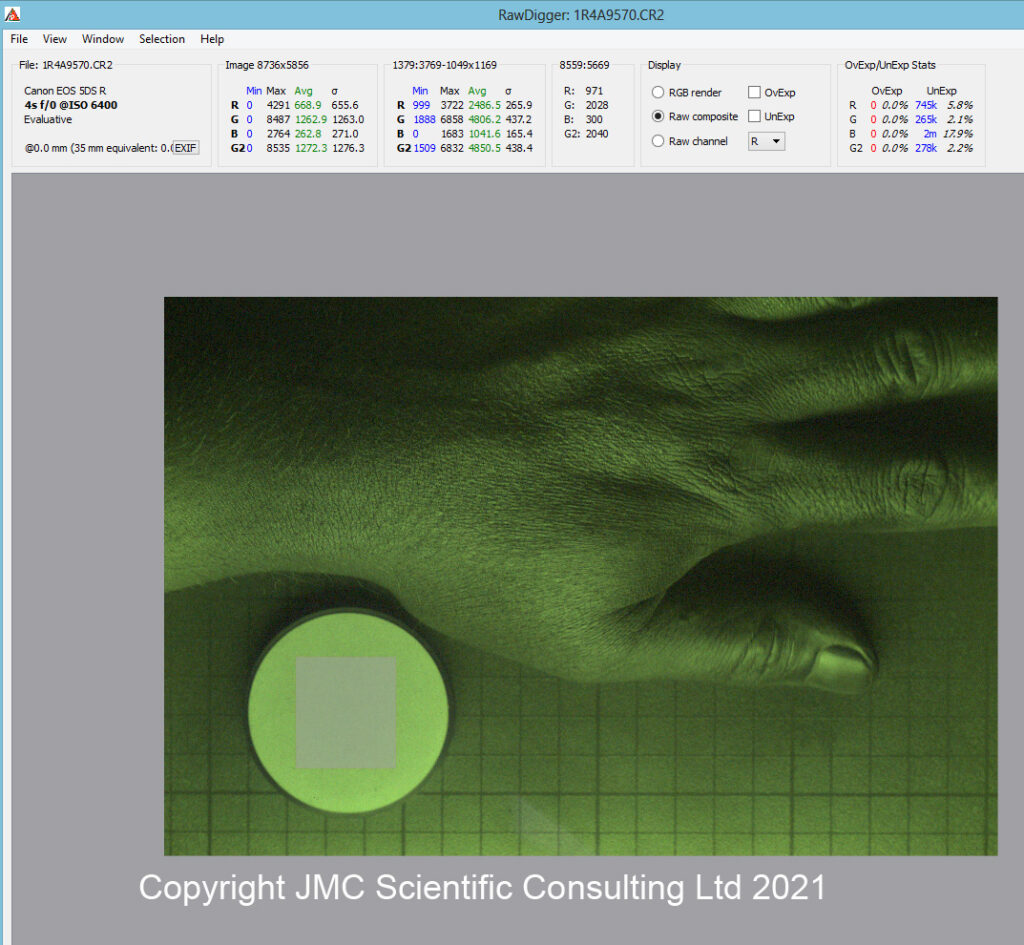
The image above was taken with converted Canon EOS 5DSR camera using an Invisible Vision 308nm filter. The Raw composite file has a distinct green colour cast at this wavelength, showing the green parts of the Bayer filter have a better transmission here than the red and blue parts. Oh and do not go shining 308nm light on your skin, without doing an extensive safety assessment. You have been warned…..
The Raw file from the Sony A7III at 254nm looked like this.
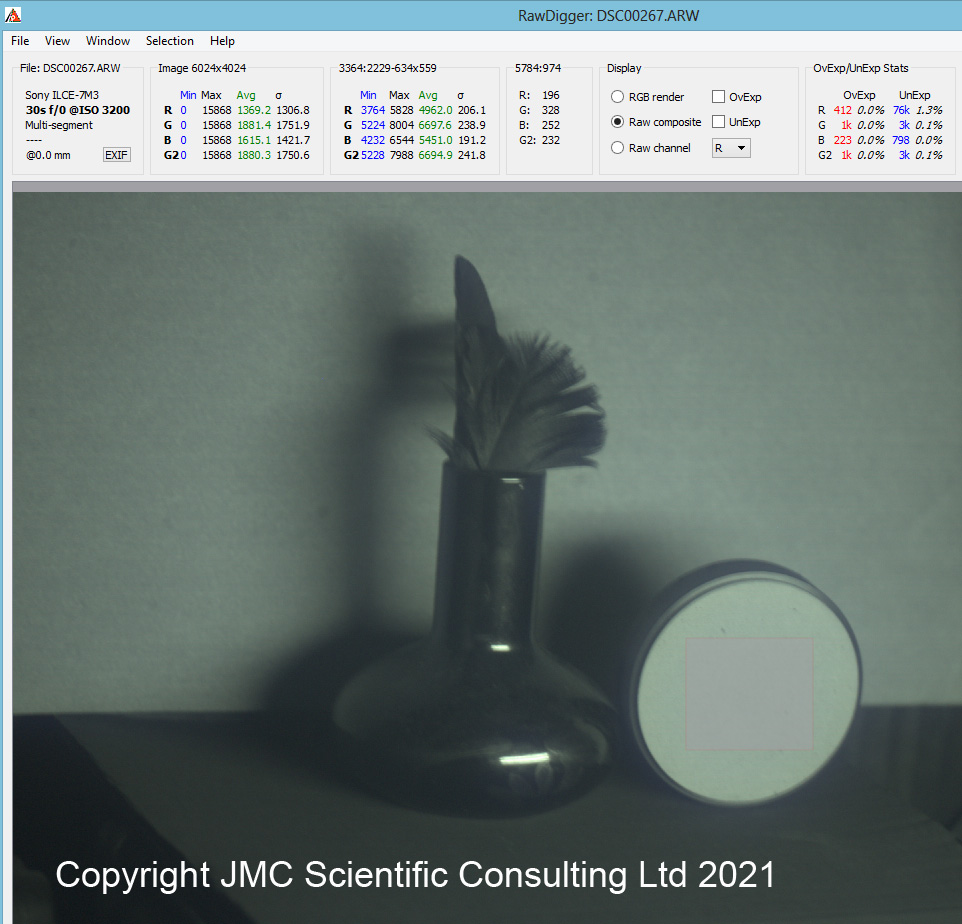
At 254nm the green channels response from the diffuse reflectance standard are still slightly higher than red and blue ones, but there is much less difference between them all at this wavelength when compared to 308nm. As a result the Raw composite image has much less of a colour cast to it. This would suggest that the red, green and blue dyes have much more similar transmission to each other at this wavelength than at 308nm, although that remains to be proven.
One final thing before I end todays post. The Sony A7III has a quite amazing high ISO performance, so after I’d taken the images above I cranked up the ISO to 102,400, and took an image at 254nm with a 1 second exposure time!!!
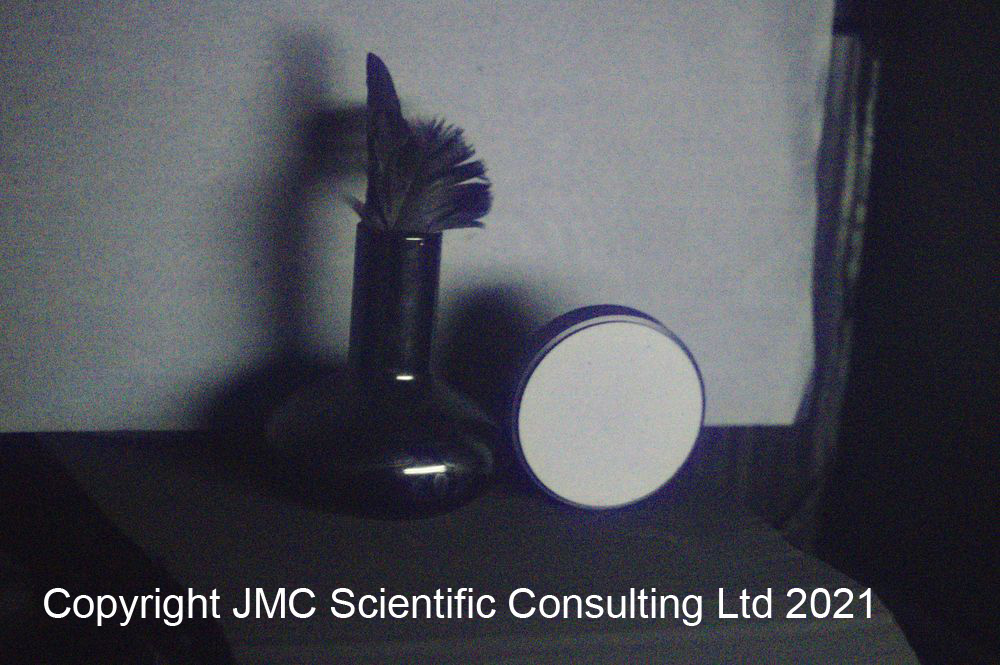
While obviously noisy, the image at ISO102,400 is quite frankly astonishing, especially when you consider that this was a 1 second exposure at 254nm.
Yet again I have been amazed and surprised by how far into the UV region it is possible to look with what are at their heart commercial high street cameras. Even with the Bayer filter and microlenses in place, it was possible to capture images at 254nm using a converted Sony A7III camera. Thanks for reading, and if you want to know more about this or any other aspect of my work you can reach me here.
